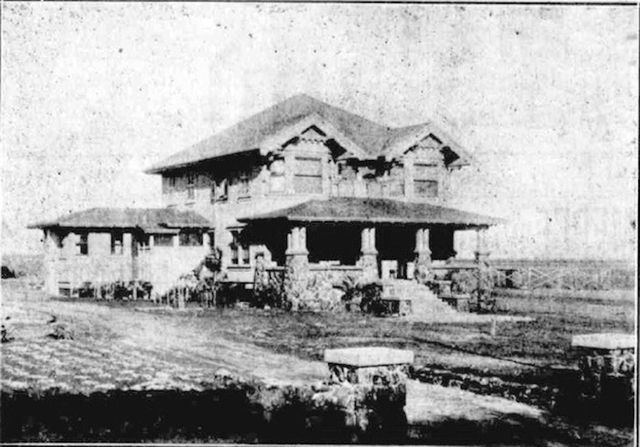When Rev. John Mortimer Lydgate (1854-1922) retired as pastor of the Lihue Union Church in Pua Loke in 1919, he and his family moved from the church’s parsonage into a new house – now long since vanished – on Rice
When Rev. John Mortimer Lydgate (1854-1922) retired as pastor of the Lihue Union Church in Pua Loke in 1919, he and his family moved from the church’s parsonage into a new house – now long since vanished – on Rice Street in Lihue.
Designed by Honolulu architect J. H. Clark and built by Hawaiian Ballasting Co., the Lydgate residence was located at the back of the site currently occupied by the Transportation Security Administration building.
Its main living room was furnished in sepia-colored, large-paneled veneer wainscoting with dark paper above, while most of the remaining rooms featured figured tapestry with ivory trimmings and ebony floors.
A landing with a view to the dining room below was built partway up the stairway leading to the second floor, at the head of which was nestled a cosy library with high widows looking out onto Rice Street.
Besides its formal bathrooms, upstairs and down, a special shower room was attached alongside the house for rough and ready use.
Years later, in 1945, businessman Wayne Ellis opened his first Hale Kauai retail store in the former Lydgate family residence.
Rev. Lydgate was a modern-day renaissance man with diverse interests that encompassed journalism, surveying, Hawaiian history and historic preservation, botany, archaeology and the managership of Laupahoehoe Plantation on the Big Island.
His desire to preserve the ruins of an ancient heiau and city of refuge near the mouth of the Wailua River led to the setting aside of that area as a public park, officially named J. M. Lydgate Park.
Fluent in the Hawaiian language, he preserved numerous Hawaiian legends by first hearing the originals verbally in Hawaiian and then translating and publishing them in English.
He founded Kauai’s first public library in 1900.
As a young man, he assisted Dr. William Hillebrand on his botanical expeditions in the Hawaiian Islands, and William DeWitt Alexander during his government surveys of the Big Island and Maui.


